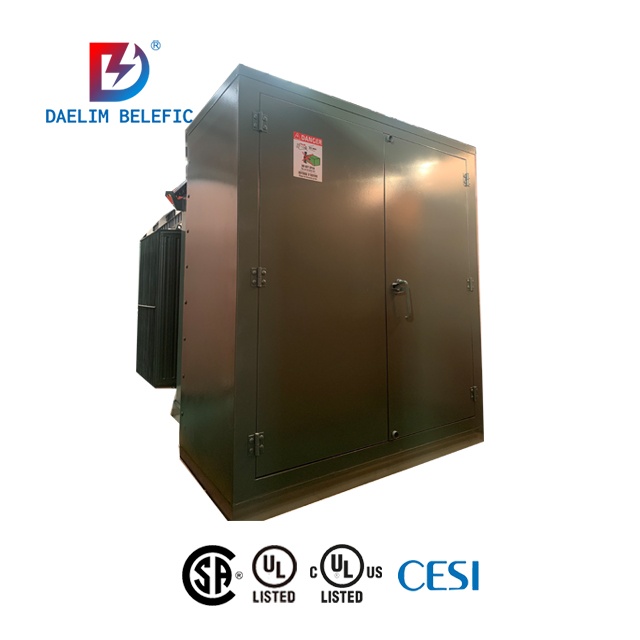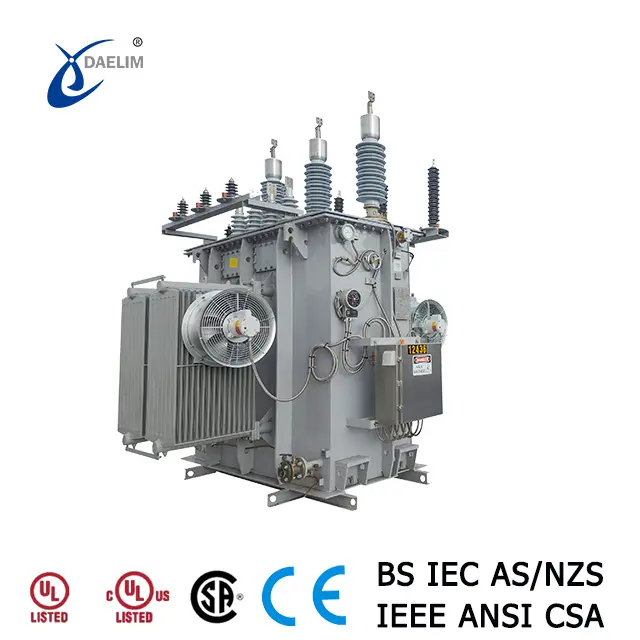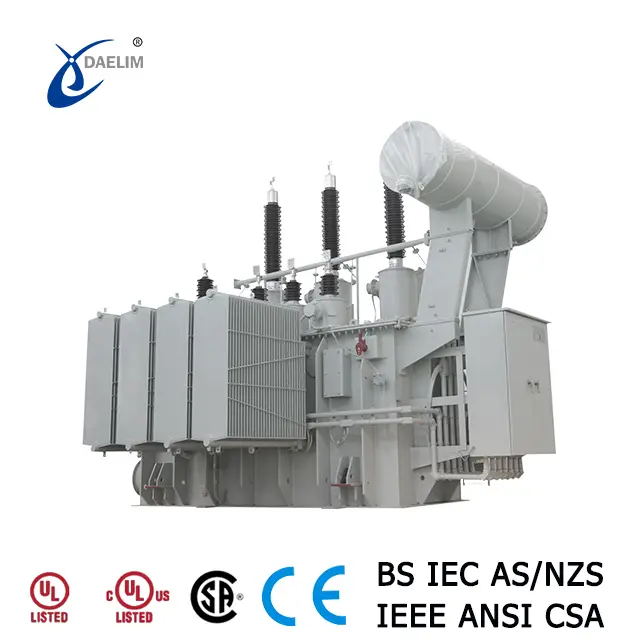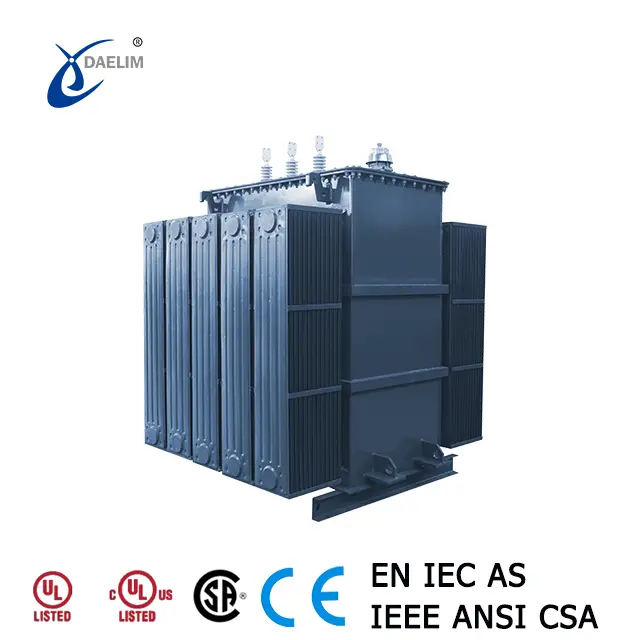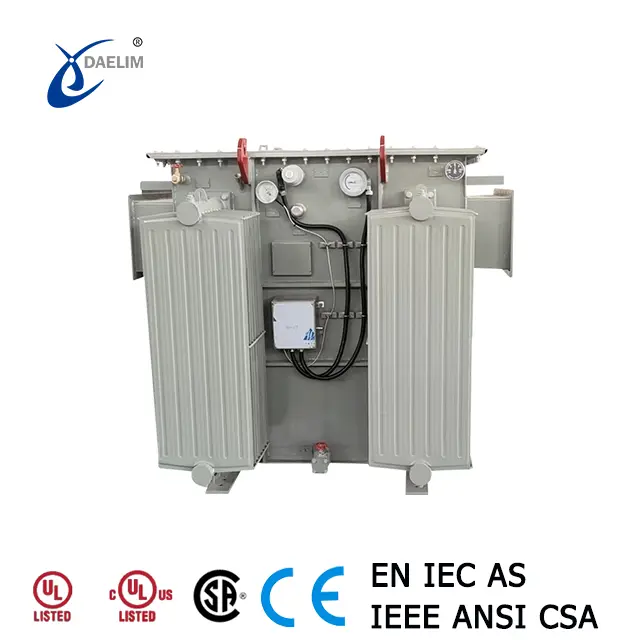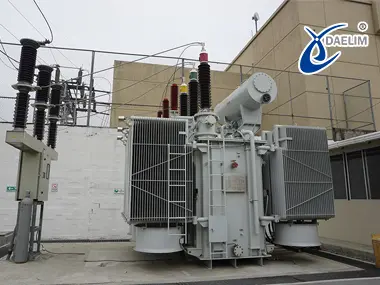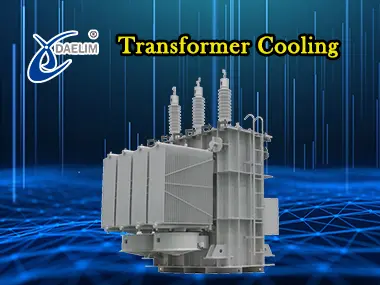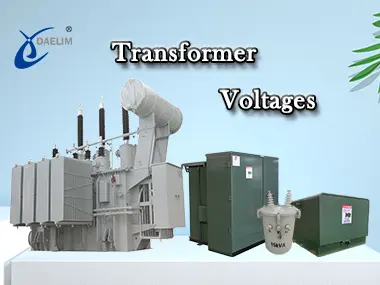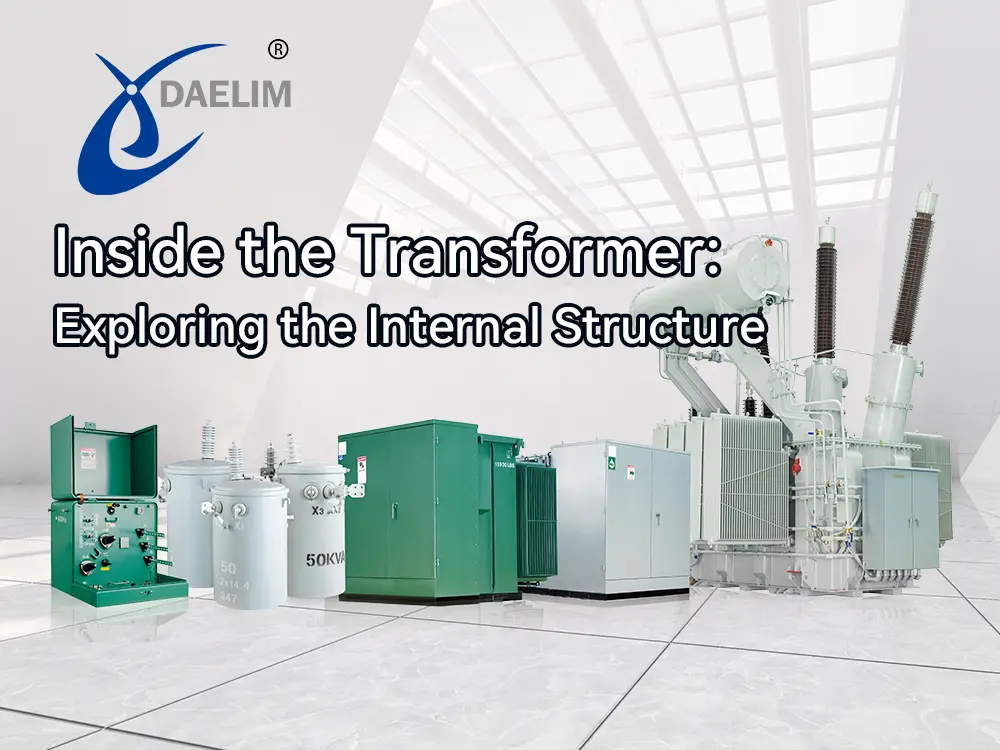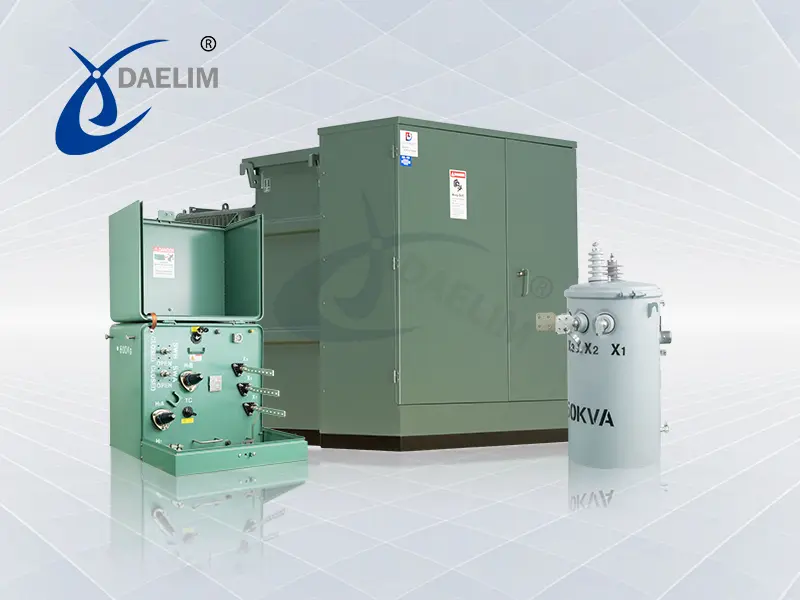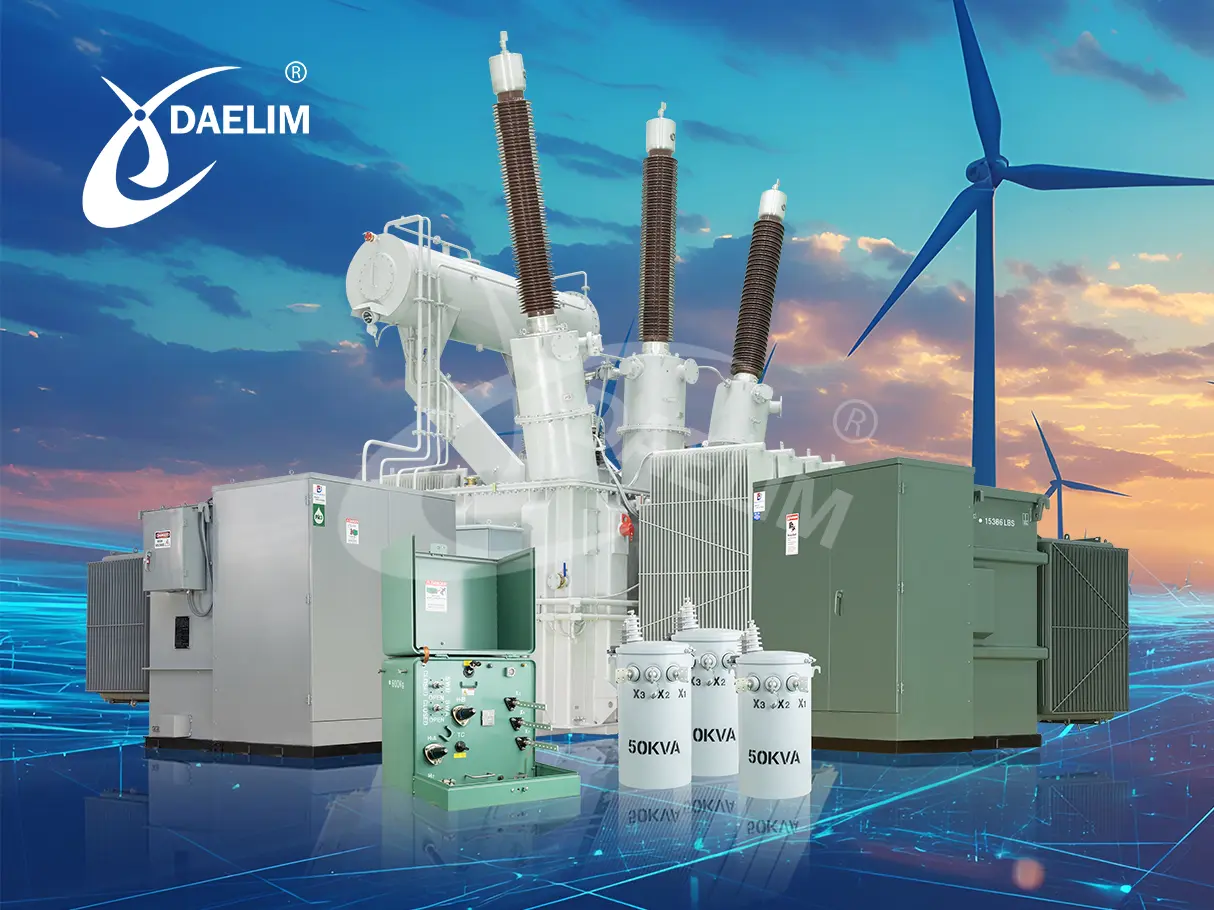Power Transformer vs Distribution Transformer
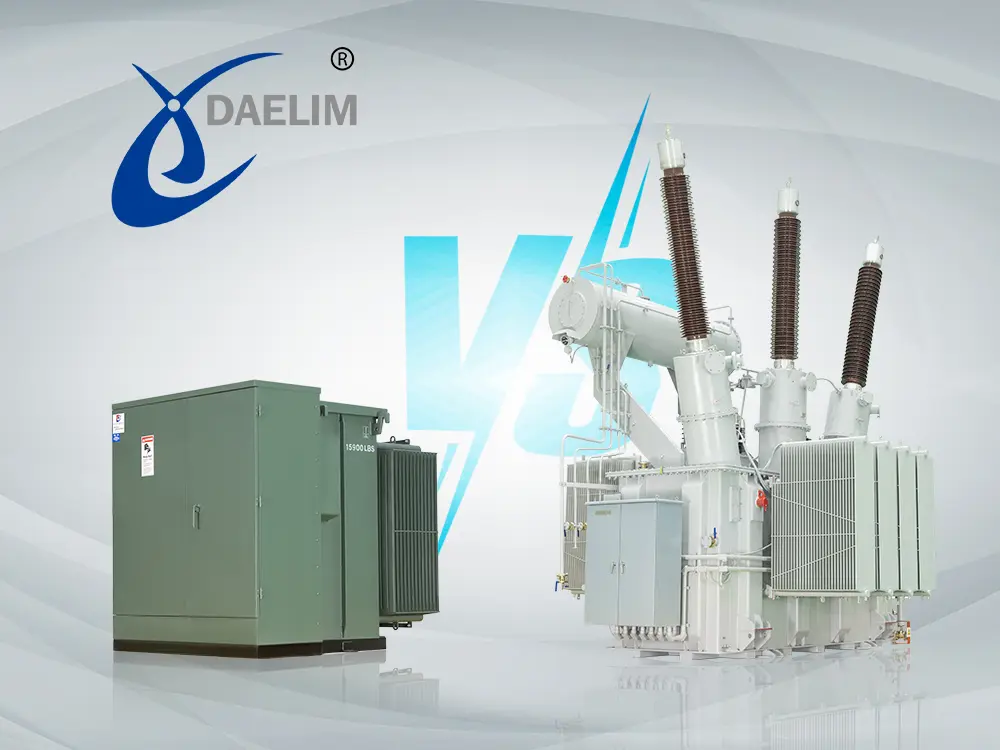
The electric transformers you see installed near your homes or industry are the electricity regulating equipment. They regulate electricity of different power ratings, voltage and current depending on your needs.
There is a different transformer for the different power ratings. Two of those transformers are the power transformer and the distribution transformer. Both transformers work to regulate electricity for you, but how they do it, the level of electric power they handle, and why they are specially used make them different.
This article is all about the power transformer vs distribution transformer, explaining the difference between the power transformer and the distribution transformer.
Contact Daelim TransformerPower Transformer vs Distribution Transformer: Key Differences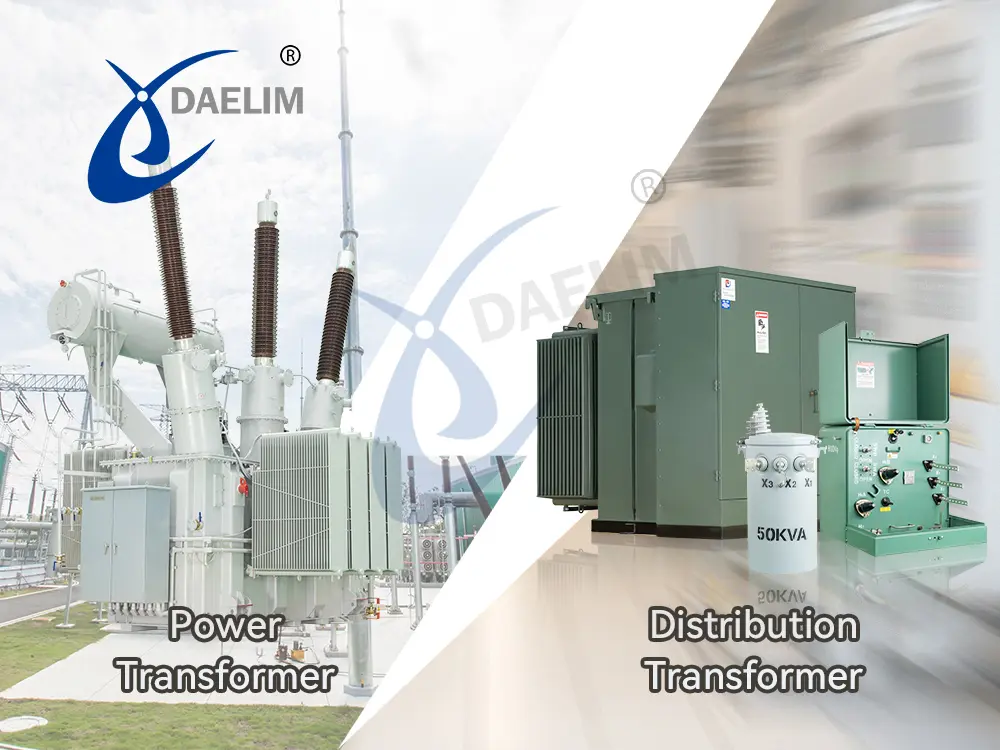
The power transformers and the distribution transformers you see are designed and developed to do the same task but of different intensity and for different purposes. Due to these two points, their parts, design, working, size, weight, and application are all different.
Definition and Purpose
The power transformers, as their name says, are designed and developed to regulate electricity for your power generation plants. Similarly, the distribution transformers, as their name says, are designed and developed to regulate electricity for distribution to consumers like you.
Working Principle
The working principle of the power transformer you see is based on step up transformers. This means that the power transformer delivers more voltage and less current than provided to them. These electrical transformers work as a bridge between power plants and local distribution setup. They take electricity from power plants and forward it to the distribution center.
Reason why power transformers work like this lies in the distance at which they need to deliver electricity. Due to the long distance between power plants and consumers. There will be huge losses like copper losses and heat losses if current is not reduced.
Opposite to the power transformer, the working principle of the distribution transformer is based on the step down transformer. They take input from the power transformer and provide output directly to your home.
The current reduced by the power transformer is gained back by the distribution transformer. Similarly the voltage increase is reduced to normal and safe values.
Learn more:High Voltage Transformer:Definition,Principle,Uses and Price
Voltage Rating
When we compare the distribution transformer vs power transformer, then their main difference lies in their voltage rating. Both transformers have several variants, and each is designed and developed to regulate a different voltage.
A power transformer is designed and developed to regulate a voltage rating of as high as 400 kV and as low as 33 kV, while the distribution transformer rating is low. They are designed and developed to regulate a much lower voltage rating of 11 kV to 230 V.
Reading more about:The Ultimate Guide to Transformer Voltages
Loading Conditions
Each transformer you see is designed to handle a particular range of load and each transformer has its maximum load capacity. Power transformers are always designed and developed to work at maximum load capacity and they always operate at their maximum load capacity.
Opposite to that distribution transformers never or in some cases rarely operate at their maximum load capacity. They are always kept at 60 to 80 % of their load capacity.
Transformer Winding
The winding of both of these transformers is very different. As we have explained, most power transformers are step up types. So when you look at their primary winding, they appear to be smaller than secondary. This is to reduce the current produced in the secondary due to magnetic flux. As secondary winding has more copper, the voltage will always be more than provided.
The transformer winding of the distribution transformer hanging on your nearby pole is very different from this, and its working is exactly opposite to the power transformer. The distribution transformer primary winding has more turns than the secondary winding. Due to this, when the magnetic flux works to produce secondary voltage in the secondary winding, its magnitude is always less than the primary winding. The current works opposite to the voltage, and a decrease in voltage in the secondary winding makes it flow more current.
If we consider just the size of the winding and not the number of turns and its design, then the winding size of the power transformer is always much greater than the winding size of the distribution transformer. The power transformer has to regulate a much higher level of electric power as compared to the distribution transformer. So that’s why it's winding has much more copper, has a much bigger size, and weighs much more than a distribution transformer.
More resource:Understanding Types of Transformer Winding and Their Applications
Transformer Insulation
The most important thing with transformer winding is the transformer winding insulation. The winding layers need to be insulated from the transformer core and as well as from all other outer components. When discussing differences between power transformer and distribution transformer, it is important to discuss their insulation as both have different power levels and thus different insulation requirements.
As power transformers always have to regulate high power electricity for your, so its insulation grade and number of layers of insulation material used is always at a higher end as compared to distribution transformers that regulate low power electricity. Larger power transformer might be using several layers of insulating material between winding and core. They might be using one or two paper layers, a layer of mica and then cover both layers in polyester film.
Distribution transformer does not need that many layers of insulation material. To insulate your distribution transformer winding, insulation paper of 0.05 mm to 0.15 mm thickness is sufficient. Paper layers are made between core and winding and then this assembly is dipped in oil for oil type transformers or in epoxy resin in dry type transformers.
Read more:Comprehensive Guide to Transformer Insulation: Types, Structures, and Maintenance
Cooling Method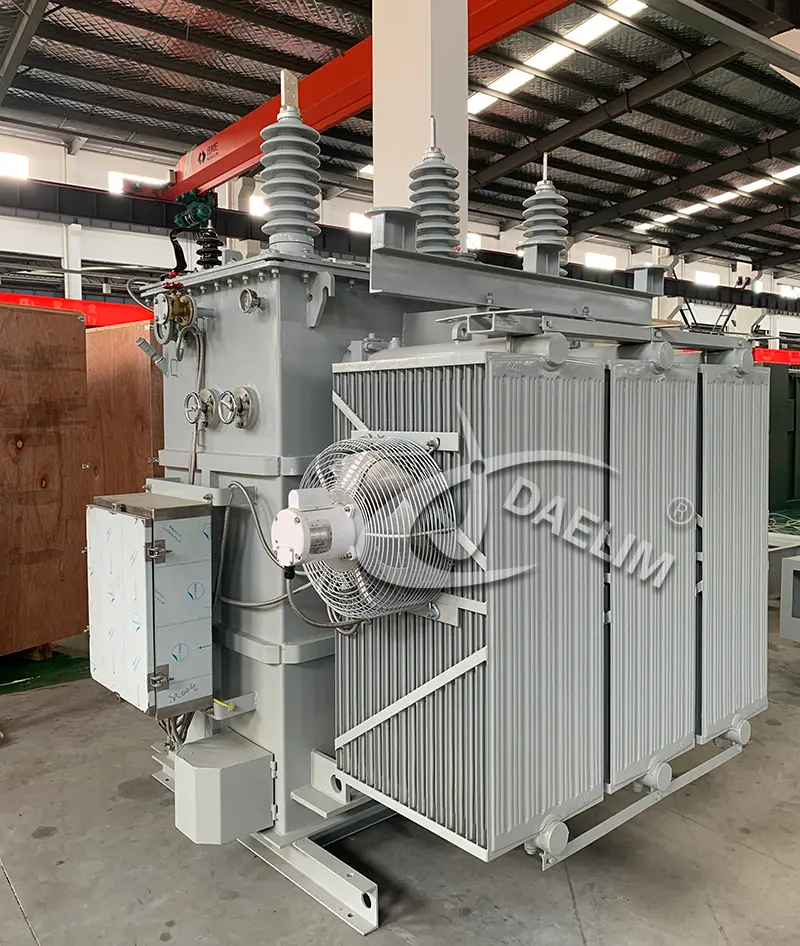
Each transformer you see produces a lot of waste heat at the transformer winding and transformer core during the electricity regulation process. This waste heat needs to be transferred to the surrounding atmosphere in a safe and efficient manner. The heat produced by the power transformer is much more compared to the heat produced by the distribution transformer.
This is because the power transformer controls higher electrical power than our distribution transformer. So, to remove the waste heat from the power transformer winding and core, the power transformers are provided with oil natural air forced or oil forced air forced type of cooling methods.
In the first cooling method, oil takes heat from the transformer winding using a natural convection method, and heat from the oil is transferred to the atmosphere using forced convection. A fan is used to cool the transformer tank. This is important because the heat produced by these transformers cannot be removed by free convection methods. To cool the biggest of the power transformers, oil is also forced to move over the transformer winding using an oil pump. This makes forced convection transfer more heat from the transformer winding to the oil.
The distribution transformers you have do not regulate as much power as the power transformers, do not produce as much heat as the power transformers and so do not need any forced convection. To cool the distribution transformers, the most used methods are oil natural air natural. There, heat from the transformer winding is transferred to the oil and from the oil to the atmosphere using free convection methods.
In small distribution transformers, dry-type transformer winding can also be used. In these methods, there is no oil used for cooling. The transformer winding is dipped in resin and solidified after curing. Now air is forced using a fan to pass over the transformer winding and remove waste heat. For even smaller pole-type distribution transformers, heat produced is so small that air natural convection is good enough to remove the waste heat produced at the winding.
Learn more:What is Transformer Cooling and How is it done?
Efficiency of Transformer
Transformer efficiency is about how good transformers regulate electricity with minimum losses within the transformer. The power transformer being designed and developed to help transfer electricity for long distances has very high efficiency. Power transformer efficiency usually lies between 95 % to 99 % due to their step up design. In the step up transformer, voltage is increased and current is decreased. Due to this all losses due to the current are reduced and high efficiency of even 99% is possible.
Quite opposite to this, the distribution transformers are designed and developed to step down the electricity. This step down of electricity decreases the voltage level while increasing the current flowing in the transformer winding. The increase in current increases the current associated losses like copper losses and heat losses. Due to these losses, distribution transformers have lower efficiency of around 50 % to 70 %.
Learn more:Transformer Efficiency: The Ultimate FAQs Guide - Daelim
Size and Weight
Power transformers being designed and developed to regulate hundreds of thousands of watts of electricity direction from electrical power generators. So they are designed to be big and heavy. Power transformers are much bigger and heavier than distribution transformers.
Distribution transformers regulate less electricity then power transformers so their winding size and weight is less. Similarly the heat produced by the winding is lesser and so on the cooling mechanism needed to remove waste heat.
The distribution transformers can also be made dry type transformers, thus reducing the size further and lowering the weight as no oil is needed.
Learn more:Ultimate Guide To Transformer Sizes and Ratings
Different Types of Each Transformer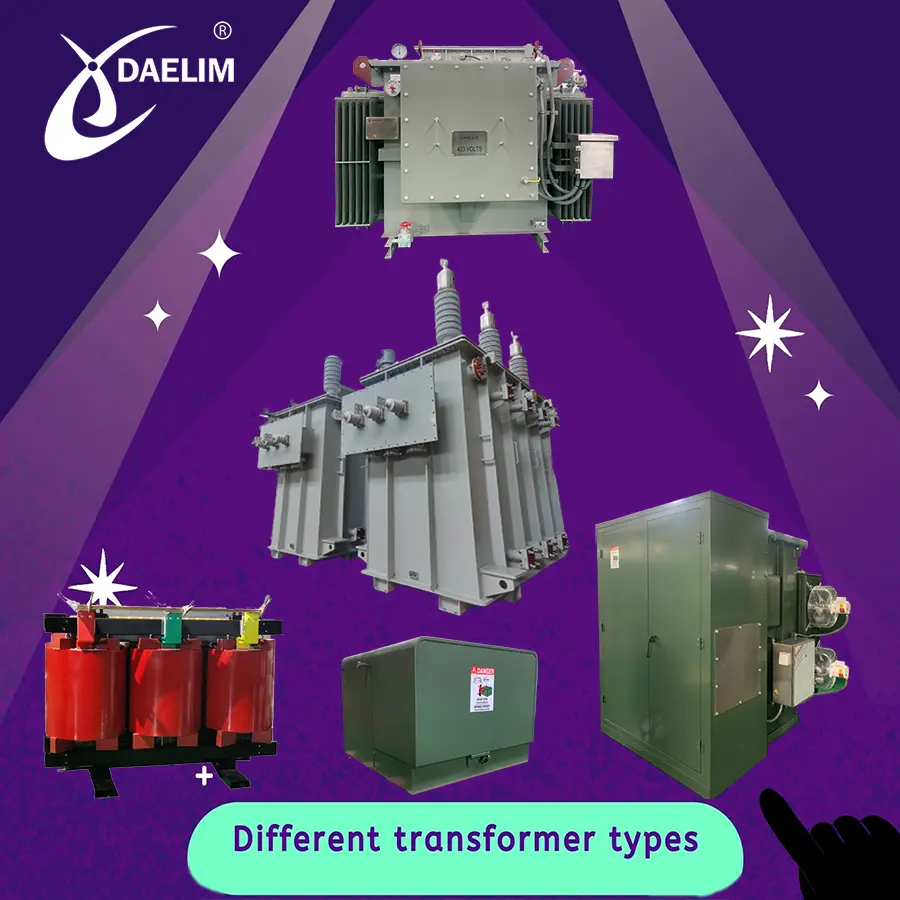
Power transformers work to deliver electricity dams and to your distribution transformer installed on poles. Due to this reason, power transformers are usually step up transformers but in some rare cases, they are also designed as step down transformers. Other than this, their design, size, and weight is so big that they are usually installed on ground and have very little variation in their design and working.
Opposite to this distribution transformers are designed and developed for unique requirements. We have pole type distribution transformers, pad mounted distribution transformers, underground distribution transformers, single phase distribution transformers, and three phase distribution transformers. Addition to these, all these types are available in dry type and oil type transformers.
Learn more:How Much You Know For The Different Types Of Transformers?
Application
Applications of both types of transformers are quite prominent. Power transformers are used in all types of power generation setups where electricity is generated and then needed to be transferred at long distances to local distribution centers. Power transformers are used in hydral power generation plants, thermal power generation plants, wind turbine power generation plants, and in large solar parks. Power transformers are also used in some regional distribution centers where distance is greater than expected. They work there as a step up point to cover up the line losses.
Distribution transformer all used in all types of electricity distribution setups. They are used in residential electricity distribution networks, industrial electricity distribution setups, and in local electricity distribution setups. In some cases there is a need for one reserved distribution transformer for one single industry depending on that particular industry need.
Conclusion
Power vs distribution transformer both are different types of transformers based on their core task, design, and applications. Power transformers are used to deliver electricity from power plants to local distribution centers whereas distribution transformers are responsible for distributing electricity from the local grid to residential homes and industrial areas. Both have their own unique features that are designed to help efficient distribution of electricity from power plants to your homes and industry.
Follow Up
Power transformer and Distribution transformers are a crucial part of our modern world as they enable electricity distribution from local power generation plants to our homes and industry. Daelim offers state of the art designed power and distribution transformers that are known for their reliability and efficiency.
We offer power and distribution transformers of all types, sizes, capacity, and load range. We supply, install, maintain, and provide all necessary customer support to our clients in the USA, Europe, Australia and people around the globe.
If you have any query, Contact Us and our team of experts will talk you through the process.
Related Products
Related Article
How Long Does It Take To Replace A Transformer
Replacing a transformer involves several steps, including inspection, equipment transportation, removal of the old transformer, and installation of the new one. Smaller transformers can be replaced in a few hours, while larger industrial or utility transformers may take days or even weeks. Factors such as transformer type, site conditions, weather, and availability of parts can influence replacement time. Proper planning ensures efficiency.
What is Transformer Cooling and How is it done?
Transformer cooling is essential for managing waste heat generated during electricity regulation. There are several cooling methods, including natural air, forced air, oil-based systems, and combinations of oil and water cooling. The choice of method depends on transformer type, capacity, environmental conditions, and budget. Effective cooling ensures transformer safety, performance, and reliability. Daelim offers high-quality cooling systems for various transformer specifications globally.
The Ultimate Guide to Transformer Voltages
Transformers are essential for regulating voltage in power systems, ensuring safe and efficient electricity distribution. They come in various voltage ranges, including low, medium, high, and extra-high voltage for different applications, from residential use to heavy industrial operations. Understanding transformer voltages—such as 240V, 480V, 600V, and renewable energy-specific voltages like 600V and 800V—is crucial for optimizing performance and preventing equipment damage in sectors like manufacturing and energy.
Inside the Transformer: Exploring the Internal Structure
Transformers are complex devices with a core, windings, and cooling systems that regulate electricity efficiently. Their internal structure varies by type, such as oil-filled or dry transformers, featuring specific winding styles (e.g., helical, disc) and cooling mechanisms (e.g., oil-forced, air-natural). Design depends on power ratings, voltage, and application, ensuring optimal performance in power generation and distribution.
Introduction to Auxiliary Transformers
Auxiliary transformers are specialized transformers designed to power auxiliary equipment in power plants, substations, and renewable energy systems. They step down electricity for safe use in sensitive systems, available in dry, oil-immersed, stationary, and portable types. Key features include compact design, efficient cooling, and protective mechanisms, ensuring reliable operation in diverse applications.
Introduction to Transformer Inspection
Transformer inspection is a vital process to ensure the optimal performance, safety, and longevity of electrical transformers. It involves visual checks, electrical testing, thermal imaging, and oil analysis to detect issues early, reduce downtime, and comply with regulations. Advanced tools like sensors, drones, and digital monitoring enhance inspection efficiency and accuracy.

